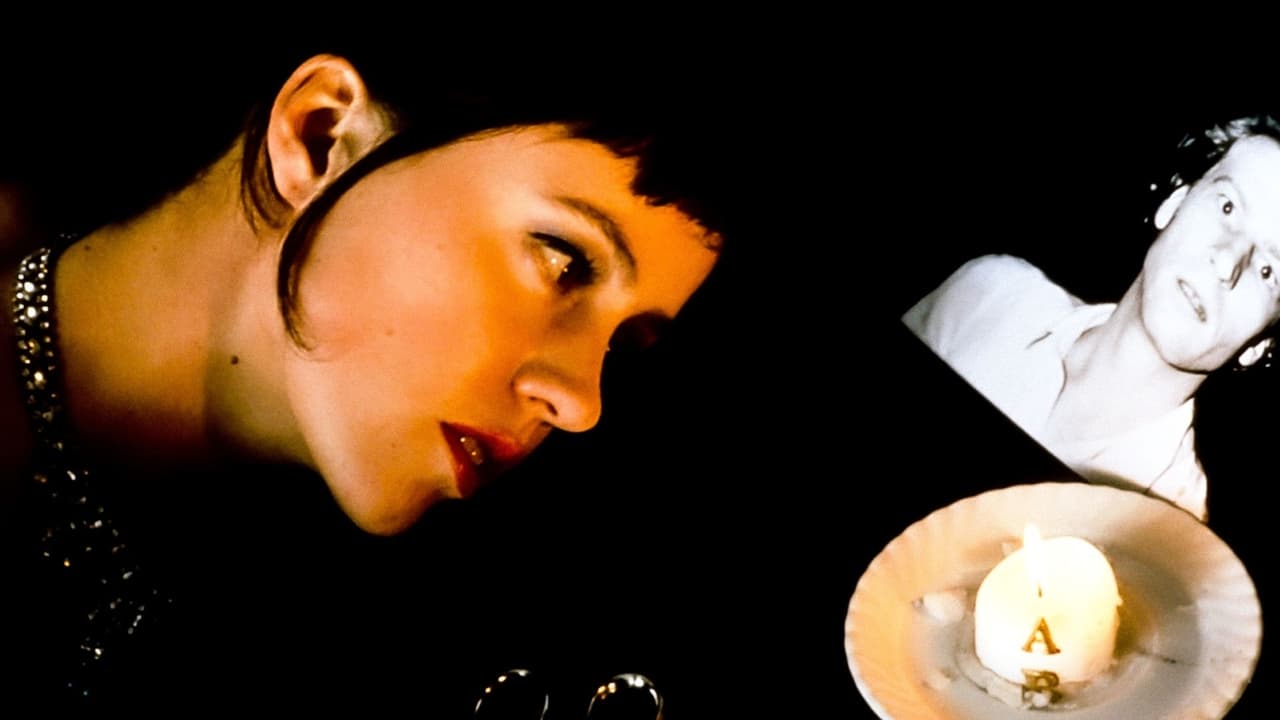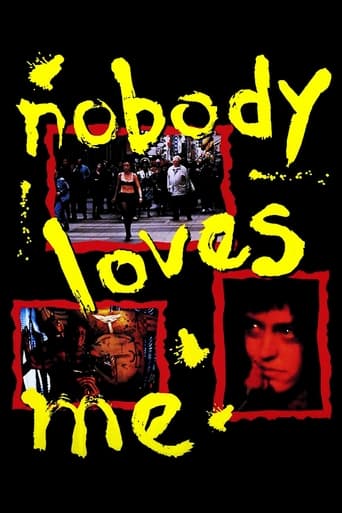

The greatest movie ever made..!
... View MoreAmateur movie with Big budget
... View MoreA lot of fun.
... View MoreThis movie feels like it was made purely to piss off people who want good shows
... View More"Keiner liebt mich" or "Nobody Loves Me" is a German movie from 1994, so this one had its 20th anniversary two years ago. The director is Doris Dörrie and she also write the short story this film is based on and adapted it herself for the screen here. And even if this film is already over two decades old, this is not one of Dörrie's earliest career efforts. She has been in film for a long time and there is no denying that she is among the most influential filmmakers in Germany. Many of her works have a strong connection to the country of Japan, also her most recent film, but this movie from the mid-1990s is not one of these. There is more a bit of an African connection in here. It runs for 100 minutes and stars Maria Schrader, who won a German film award for her performance here and for another two films. I have not seen these other two as they are clearly less known than this one here, but I am a bit shocked that such an unrealistic and over-the-top performance is appreciate too. Then again, a lot of this character has to do with how Dörrie wrote her. But even there, the German Film Awards screwed up as they honored the entire work as one of the best of the year. i guess we can be glad that "Der bewegte Mann" came out that year. Otherwise this film here may even have won the biggest awards of the night.I am a bit unsure what to think of Dörrie as a filmmaker, but overall I don't really like her I guess. Her films about the male or female psyche in a (not so) extreme situation eventually come down to the same and it is rarely really creative. The only film I very much enjoyed from her is "Erleuchtung garantiert". But back to this one here. It takes us in the life of Schrader's character as she is scared of not finding a man to marry anymore at the age of 30. A bit of a bizarre premise, not only because she is very attractive, but because people today find their significant others much later on many occasions and I doubt that the concept of "Torschlusspanik" started that early back then. And if it did, then you could still say the movie has not aged too well. Speaking of Schrader, I never saw a particularly gifted actress in her and this film just makes me think the same. I do believe she is a much better filmmaker herself though as she recently proved with her Stefan Zweig movie. I am also not too fond of the title here as it sounds really desperate and I don't really mean in terms of the desperate main character, but because of the desperate attempt to choose the baitiest title ever and lure as many people as possible into the theater. The supporting cast includes decently talented actors like Trissenaar, Naujoks and Król, but none of them were really given the material to shine in here. From minute one, it was all about Schrader and her character and with this attempt, the film turned into a major failure that feels unrealistic all the time in the way of the protagonist's actions and what happens to her throughout the film. For me, this is a contender for worst 1994 film. I highly recommend you to stay away.
... View MoreIt's hard to pinpoint exactly what makes this movie stand out, but stand out it does. Maria Schrader is very charming, but of course we already knew that. The same goes for Ingo Naujocks in the part of a budding painter with a death wish. Interesting take, by Pierre Sanoussi-Bliss, on the prototypical part of the sad clown. But most importantly, "Nobody loves me" is a very spiritual movie, and Maria Schrader's character Fanny is a very spiritual girl. She is what you might call an equal opportunity believer: ossified Christian saints, morbid new-age workshop gurus, and voodoo priests all get a chance to help her find prince charming. Eventually, the spell of loneliness is lifted by her shaman-in-residence. As soon as his mission is accomplished, he is promptly removed to heaven (Old Testament style) with a gold ingot in hand (New Testament style) to pay his space alien ferrymen (Greek-mythology-meets-Roswell-conspiracy style). The way writer-director Doris Dörrie makes the supernatural seem a natural part of everyday life will stay with you until well after the final curtain.
... View MoreIt's been years since i saw this film, but it left a lasting impression on me. It is so funny and cool. I really hope they release it on DVD with English subtitles because i don't understand German sadly.... I am (almost) willing to learn German just so that i can enjoy this film on DVD. It's that good :) The film is about this girl who is afraid to die, so she's taking a course preparing her for her death, and some strange vodoo man moves into her building. And if i remember correctly she's having an affair with her boss, or at least with someone who works with her, and it's a disaster... Her desperation and loneliness is easy to identify with, as well as her struggle for love and direction in her life.
... View More"Keiner Liebt Mich" 1994 Is it fantasy, or romance? It is die deutsche Romantik. A mixture of both fantasy and romance; with humor, pathos, and a flawless cast of misfits. I can't recommend this movie highly enough. Shown as "Nobody Loves Me" on cable in my area, it is easily missed. But that would be your loss. Watch Fraeulein Fink's cynicism melt before your eyes, as she melts your heart. If I were only 20 years younger, I'd jump at the chance to offer her "eine Tasse Kaffee."
... View More